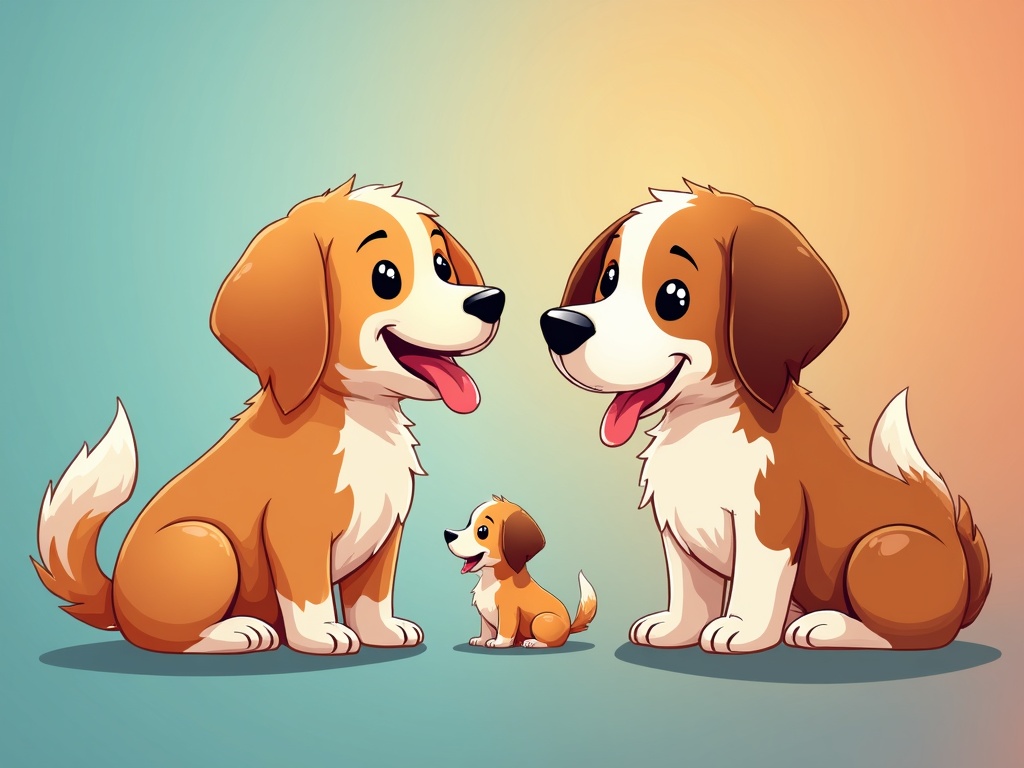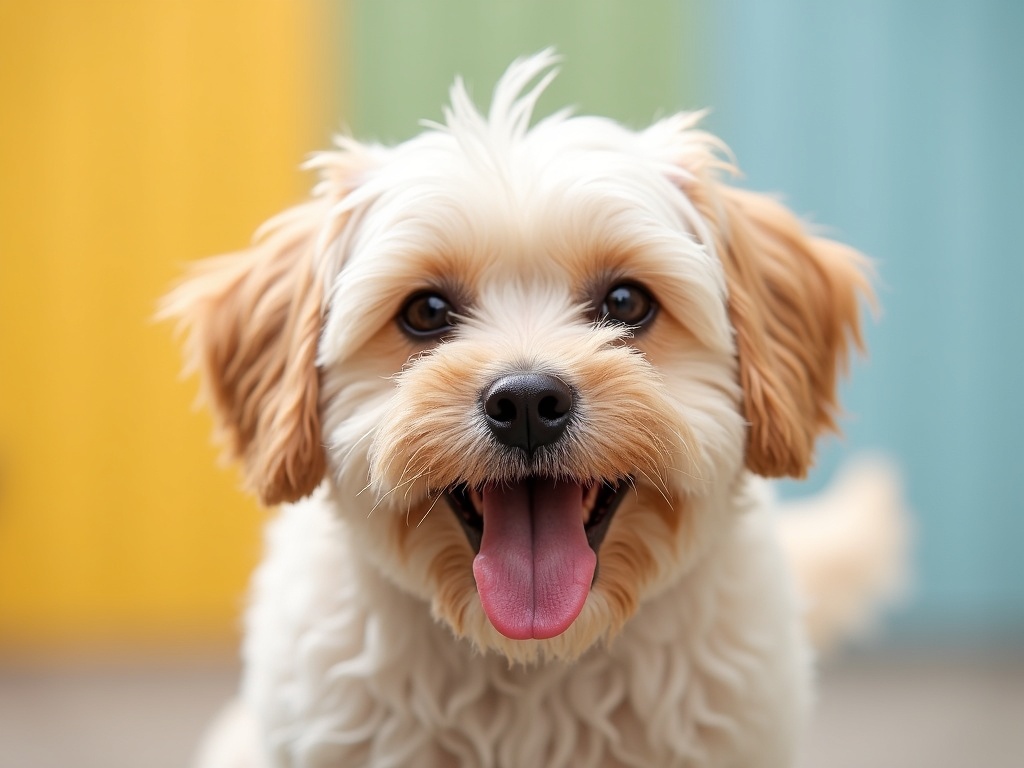Socialization Tips for Small Dog Breeds: Nurturing Confident Companions
Imagine a tiny Chihuahua, trembling at the sight of a friendly Labrador. Or a perky Pomeranian, barking incessantly at every passing pedestrian. These scenarios, unfortunately, are common for small dog breeds who haven't been properly socialized. While their size might make them seem less intimidating, small dogs are just as vulnerable to fear and anxiety as their larger counterparts – and it's our job as their guardians to ensure they grow into confident, well-adjusted members of society. This guide provides essential socialization tips tailored to the unique needs of small dog breeds.
Why Socialization is Crucial for Small Dogs
Many people assume that because small dogs are, well, small, socialization isn't as important. This couldn't be further from the truth. In fact, inadequate socialization can lead to a host of behavioral problems, including:
- Fear Aggression: Reacting defensively (barking, snapping, biting) out of fear.
- Anxiety: Displaying signs of stress like panting, pacing, whining, or hiding.
- Excessive Barking: Barking triggered by various stimuli, such as strangers, other dogs, or noises.
- Shyness & Withdrawal: Avoiding interactions and appearing withdrawn or fearful.
Proper socialization, on the other hand, helps prevent these issues by exposing your puppy to a wide range of experiences in a positive and controlled manner. It teaches them that the world isn't a scary place and that new people, animals, and environments can be safe and even enjoyable. Early socialization sets the stage for a lifetime of confident and happy interactions.
Understanding the Unique Challenges of Socializing Small Breeds
Socializing a small dog isn't always the same as socializing a larger breed. Their size presents some unique challenges:
Overprotection: We often instinctively want to protect small dogs, which can inadvertently limit their exposure to new experiences. Constantly scooping them up at the first sign of anything new actually reinforces the idea that the world is a dangerous place.
Intimidation: Large dogs, even friendly ones, can be overwhelming for a small puppy. Their sheer size and energy can be intimidating, leading to fear and anxiety.
Physical Vulnerability: Small dogs are more physically vulnerable and can be easily injured by larger, boisterous dogs. This necessitates careful selection of playmates and controlled environments.
Misinterpretation of Body Language: Other larger dogs may not understand the body language of smaller breeds, potentially missing cues of discomfort or fear, and leading to accidental injury.
The Critical Socialization Window: Start Early!
The most crucial socialization period for puppies is between 3 and 16 weeks of age. During this time, their brains are incredibly receptive to new experiences, and positive interactions during this period can have a lifelong impact. But even if you adopt an older small dog, socialization is still possible and beneficial; it may just require a more gradual and patient approach.
Essential Socialization Tips for Small Dog Breeds
Here's a step-by-step guide to help you socialize your small dog effectively:
1. Create a Positive and Safe Environment
Start at Home: Begin by introducing your puppy to different sights, sounds, and textures within your home. Play different types of music, vacuum, and let them explore different rooms.
Gradual Exposure: Introduce new experiences gradually. Don't overwhelm your puppy with too much, too soon. Observe their body language and adjust the pace accordingly.
Positive Reinforcement: Always use positive reinforcement, such as treats, praise, and toys, to reward calm and confident behavior. Never punish or scold your puppy for being fearful.
2. Introduce New People
**Controlled Introductions:Arrange for your puppy to meet new people in a controlled environment, such as your home or a quiet park.
**Respectful Interactions: Instruct visitors to approach your puppy calmly and gently, avoiding direct eye contact or reaching over their head. Encourage them to offer a treat.
**Variety is Key:Expose your puppy to people of different ages, genders, and ethnicities, as well as people wearing hats, glasses, or uniforms.
3. Careful Introductions to Other Animals
Start with Sight & Smell: Before direct interaction, allow your puppy to see and smell other animals from a safe distance.
Leashed Greetings: When introducing them face-to-face, keep both dogs on leash and allow them to sniff each other briefly. Supervise closely and separate them if either dog shows signs of stress or aggression.
Size Matters: Choose playmates carefully. Opt for calm, gentle dogs of similar size or temperament. Avoid pairing your small puppy with large, boisterous dogs who may accidentally injure them.
4. Explore New Environments
Carry Them: In the beginning, carry your puppy in a carrier or your arms when visiting new places. This allows them to observe the environment from a safe and comfortable vantage point.
Gradual Ground Exploration: Gradually allow your puppy to explore on the ground, starting with quiet, less stimulating environments.
Variety of Locations: Expose your puppy to a wide variety of environments, such as parks, beaches, sidewalks, pet stores, and even car rides.
5. Desensitize to Sounds
Start Softly: Introduce your puppy to common sounds, such as traffic, fireworks, and thunderstorms, at a low volume.
Pair with Positive Experiences: Pair these sounds with positive experiences, such as treats or playtime. Gradually increase the volume as your puppy becomes more comfortable.
Sound Desensitization Apps: Utilize sound desensitization apps or recordings to expose your puppy to a variety of sounds in a controlled manner.
6. Handling and Grooming
Gentle Touch: Accustom your puppy to being handled and touched from a young age. Gently touch their paws, ears, tail, and mouth.
Grooming Practice: Introduce grooming tools, such as brushes, combs, and nail clippers, gradually. Reward calm behavior with treats.
Veterinary Visits: Make veterinary visits as positive as possible by bringing high-value treats and asking the vet to handle your puppy gently.
7. Address Fear Responsibly
**Don't Force It:Never force your puppy to interact with something they're afraid of. This can worsen their fear and create negative associations.
**Create Distance: If your puppy is fearful, increase the distance between them and the trigger. Gradually decrease the distance as they become more comfortable.
**Counter-Conditioning: Use counter-conditioning to change your puppy's emotional response to a scary stimulus. Pair the stimulus with something positive, such as treats or praise. For example, if your puppy is afraid of cars, give them a treat every time a car passes by.
8. Attend Puppy Classes
**Professional Guidance:Puppy classes provide a structured environment for socialization and training, under the guidance of a qualified professional.
**Safe Interactions:These classes offer opportunities for your puppy to interact with other puppies in a safe and controlled setting.
**Basic Obedience: Puppy classes also teach basic obedience commands, which can help you manage your puppy's behavior in various situations.
Common Mistakes to Avoid
Rushing the Process: Socialization is a marathon, not a sprint. Don't try to cram too much into a short period.
Ignoring Fear Signals: Pay attention to your puppy's body language. If they're showing signs of fear or stress, back off and try again later.
Forcing Interactions: Never force your puppy to interact with something they're afraid of.
Lack of Consistency: Consistency is key to successful socialization. Make sure everyone in your household is following the same guidelines.
Neglecting Socialization After Puppyhood: Socialization is an ongoing process. Continue to expose your dog to new experiences throughout their life.
Long-Term Benefits
The effort you invest in socializing your small dog will pay off in the long run. A well-socialized dog is more confident, adaptable, and less likely to develop behavioral problems. You'll be able to take them more places, enjoy their companionship to the fullest, and provide them with a happier, more fulfilling life. So, embrace the journey, be patient and understanding, and enjoy watching your little friend blossom into a well-adjusted and confident canine companion. They'll be thankful for it!


